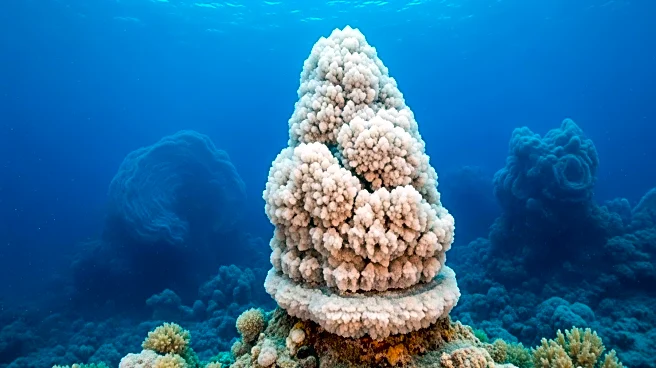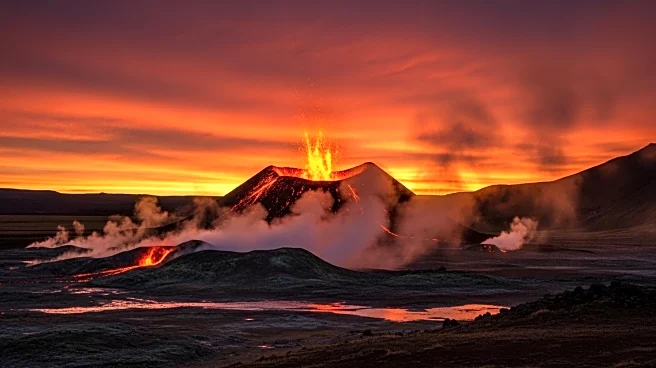What's Happening?
Researchers have discovered two diamonds from a South African mine containing inclusions of materials formed in opposing chemical environments, a combination previously thought 'almost impossible.' These inclusions provide insights into the mantle's chemical processes and diamond formation. The diamonds contain oxidized carbonate minerals and reduced nickel alloys, capturing a snapshot of the reaction that forms diamonds. This discovery offers the first real-world evidence of mantle chemistry at depths between 280 and 470 kilometers, challenging previous assumptions about oxidized material presence and kimberlite rock formation.
Why It's Important?
The findings have significant implications for geology, offering a deeper understanding of Earth's mantle chemistry and diamond formation processes. The presence of oxidized materials deeper than expected suggests that kimberlite rocks, which bring diamonds to the surface, may originate from greater depths. This challenges existing models and provides new avenues for research into mantle dynamics and the conditions under which diamonds form. The study also sheds light on the occurrence of nickel atoms in diamond crystal lattices, potentially explaining their presence at certain depths.
What's Next?
Further research is needed to explore the implications of these findings on mantle chemistry and diamond formation. Scientists may investigate the role of subducting tectonic plates in bringing oxygen-rich minerals into contact with mantle metals, as well as the potential for diamonds to form through other processes. The study opens new possibilities for understanding the mantle's chemical environment and the factors influencing diamond formation.
Beyond the Headlines
The discovery highlights the complexity of Earth's mantle and the intricate processes that lead to diamond formation. It underscores the importance of inclusions in providing valuable information about inaccessible parts of the Earth, offering a unique glimpse into the planet's deep interior. The findings may also have broader implications for understanding geological processes and the evolution of Earth's structure.











